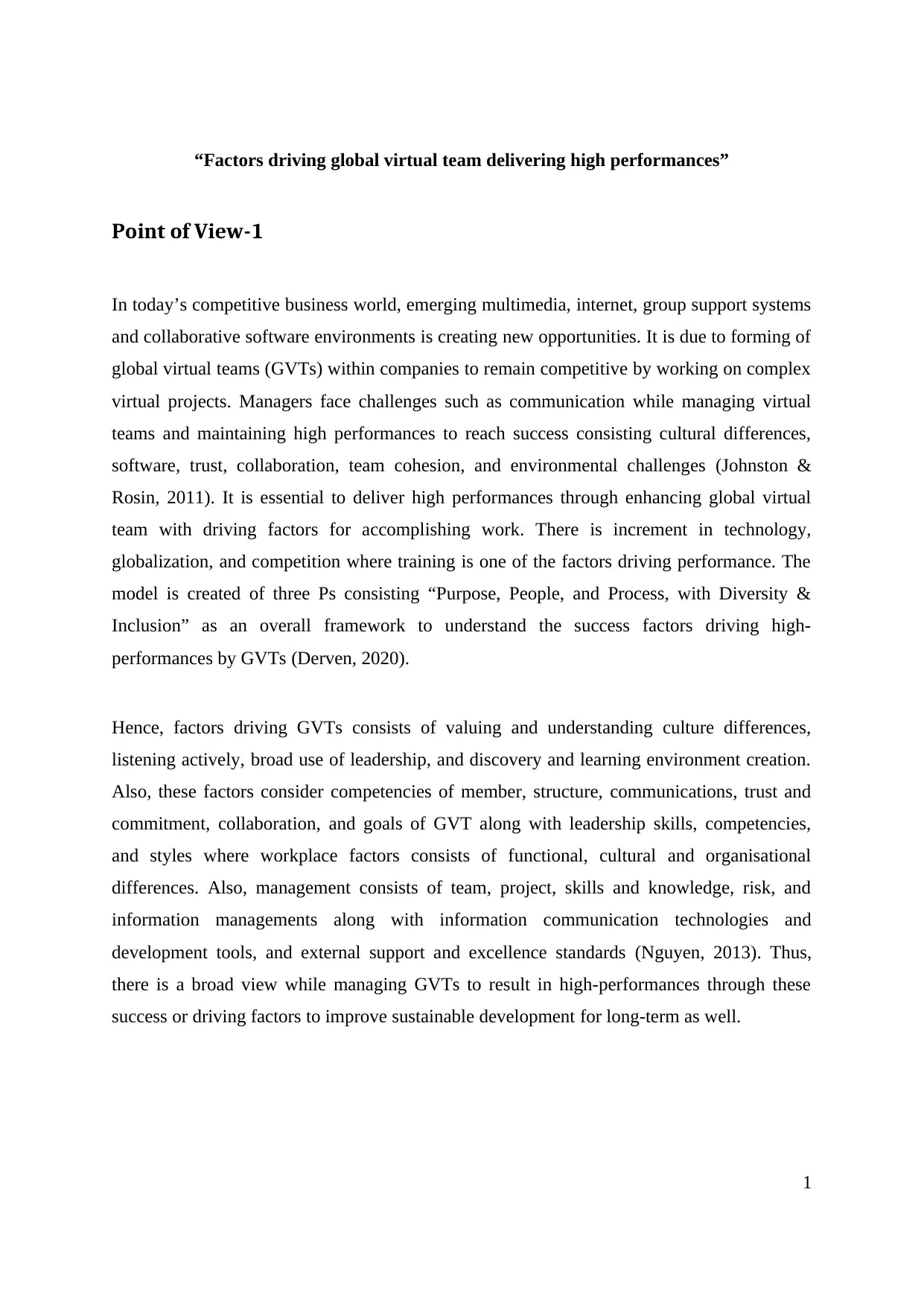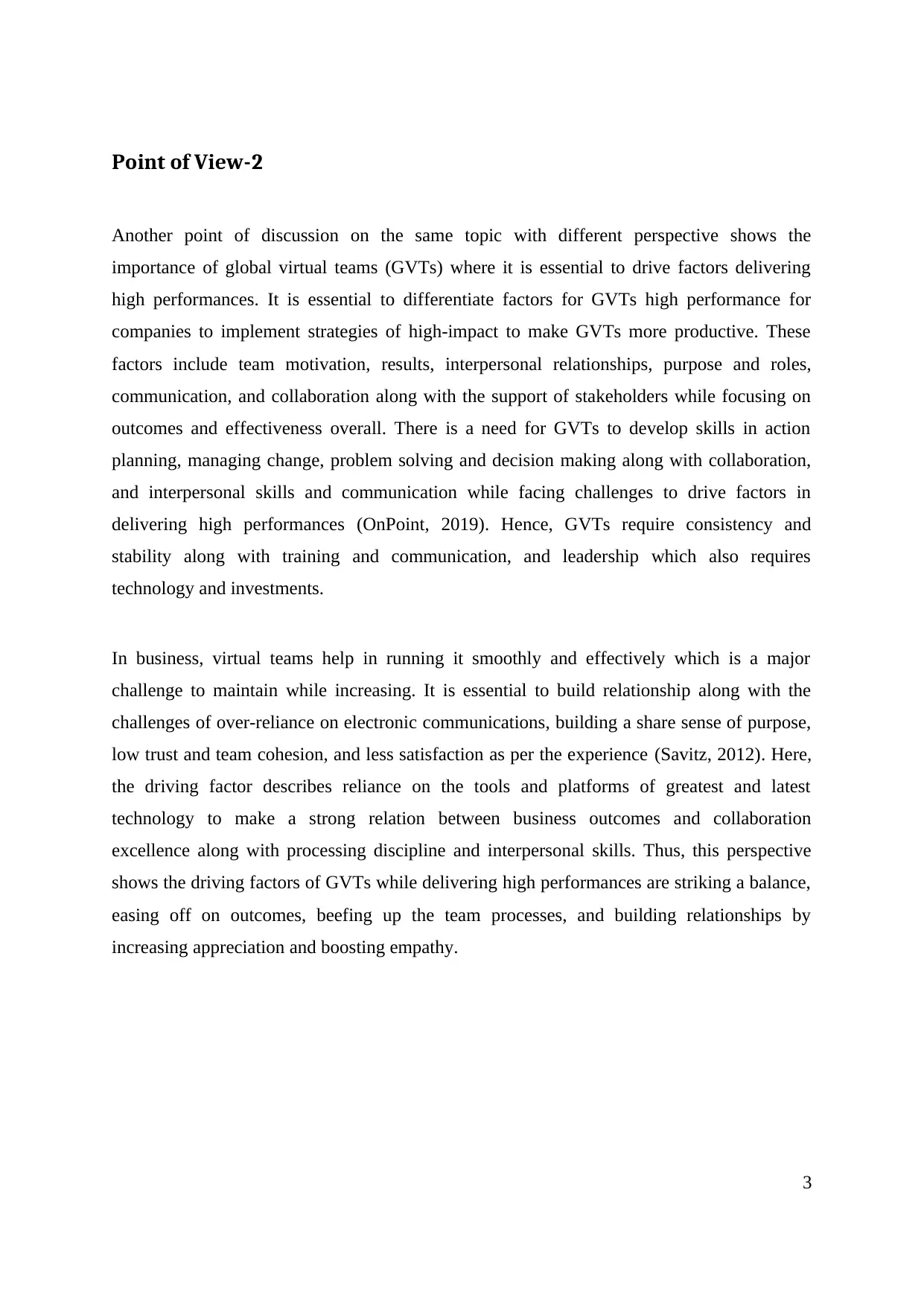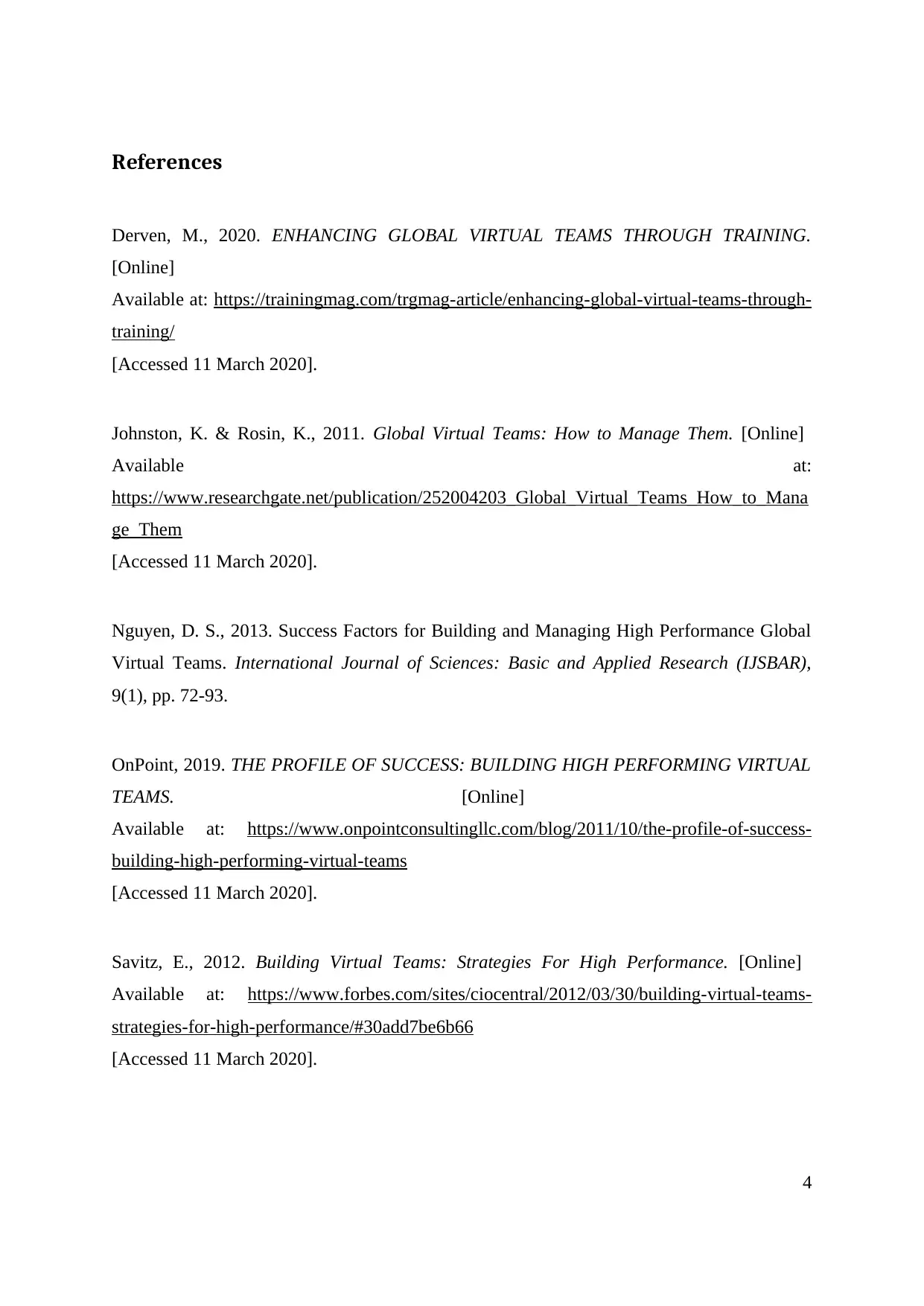A Report on Factors Driving High Performance in Global Virtual Teams
VerifiedAdded on 2022/08/20
|6
|803
|10
Report
AI Summary
This report examines the factors driving high performance in global virtual teams (GVTs). It explores two points of view, highlighting the importance of technology, communication, and leadership. The first perspective emphasizes the "Purpose, People, and Process" model, along with diversity and inclusion, as key drivers. It stresses the significance of cultural understanding, active listening, and effective leadership. The second perspective focuses on team motivation, interpersonal relationships, and collaboration, while also underscoring the need for skills in action planning, problem-solving, and communication. Both perspectives agree on the critical role of technology, training, and building strong relationships within GVTs to achieve success. The report concludes that a balanced approach, focusing on team processes, and fostering strong relationships, is essential for achieving high performance and sustainable development in GVTs.
1 out of 6












![[object Object]](/_next/static/media/star-bottom.7253800d.svg)